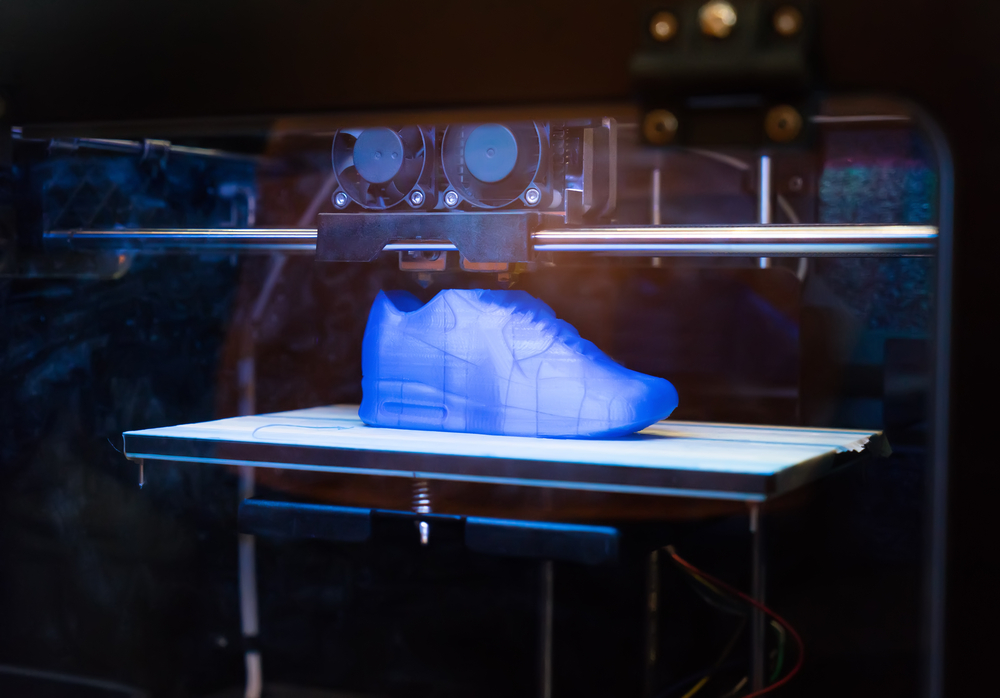
How to Enhance Sustainability in Footwear Manufacturing
Over the years, footwear companies have been making advancements in the performance of athletic shoes. Today’s running footwear is lighter and provides a higher energy return. However, this level of performance often comes at the expense of product longevity and comfort, with some marathon shoes lasting only one race before being replaced.
The short lifespan of footwear, especially running shoes, leads to large amounts of waste. Most shoes are non-biodegradable and end up in landfills where they can take 30 to 40 years to decompose. 3D printing can increase sustainability in footwear manufacturing and the final consumer product.

How 3D Printing Increases Sustainability In Footwear Manufacturing
3D printing decreases the amount of waste byproduct produced during the footwear manufacturing process and creates longer-lasting, more durable shoes. Differing from two common footwear production methods—compression molding and injection molding—3D printing or additive manufacturing streamlines and enables a more sustainable process.
Compression and Injection Molding vs. 3D Printing
Compression and injection molding involve filling custom-made metal molds with heated material, such as ethylene-vinyl acetate, natural rubber, or polyvinyl chloride. When cooled, these molds form midsoles or complete shoes. These manufacturing techniques produce a lot of waste by-product in the following four areas:
- Sprue: the channel that guides the molten material from the nozzle to the mold entry point.
- Runners: the channels that guide molten material from the sprue to the mold cavities.
- Gate: the point where the molten material leaves the runner to enter the mold cavity.
- Overflow: the potential overflow that accumulates if the cavity is not a perfect seal.
With minimal waste from support structures, 3D printing produces products and parts with greater material efficiency. 3D printing also has lower scrap rates and supports complex designs without having to split a product or part into multiple parts for manufacturing. Simplifying the manufacturing process reduces labor costs, time, and waste byproducts to create the final part or product.
The Improved Quality of 3D-Printed Footwear
3D printing can produce longer-lasting footwear, increasing sustainability. Many of today’s top running shoes are designed to be lightweight and provide high rebound performance but aren’t built for durability. Additive manufacturing technology can deliver these two advantages while also increasing product lifespan. Advancements in 3D printing materials and design flexibility are enabling footwear companies to develop superior products.
| Obtaining a pair of 3D-printed polyurethane shoes and using them for three times the length of an average pair is equivalent to keeping two pairs of shoes out of a landfill. |
Long-Lasting and High-Performing 3D Printed Shoes
3D printed shoes can sustain the same rebound for far longer than shoes with foam soles. Shoe models made with LuxCreo’s LEAP technology maintain rebound performance and comfort for more than 1 million heel strikes before the effects of compression set begin to appear. This is in stark contrast to many shoes with foam midsoles, where degradation starts at around 100,000 heel strikes.
For runners, this translates into more reliable shoes that last two-to-three times longer than leading alternatives. It also reduces environmental waste, as using a pair of 3D-printed shoes for three times the length of an average pair is equivalent to keeping two pairs of shoes out of a landfill.
Material science for 3D printing technology is continually improving and incorporating more sustainable base materials. Currently, 3D printed footwear can be composed of 10-20% bio-based materials without affecting quality. With today’s consumers increasingly becoming interested in eco-focused products, footwear companies are looking for new ways to increase sustainability, and the percentage of bio-based materials in shoes will continue to increase.
3D-Printed Footwear: The High-Performing and Sustainable Choice
3D printing is enhancing sustainability in footwear manufacturing while increasing design freedom and reducing waste. Footwear companies can minimize their carbon footprint while delivering better products that do not need to be replaced as often. With 3D printed shoes, each time a person puts them on, it can feel like the very first time.
For more information on how 3D printing is enhancing sustainability in footwear manufacturing, or to see the machines and materials that are making these advancements possible, visit our contact page or call (650) 336-0888.

